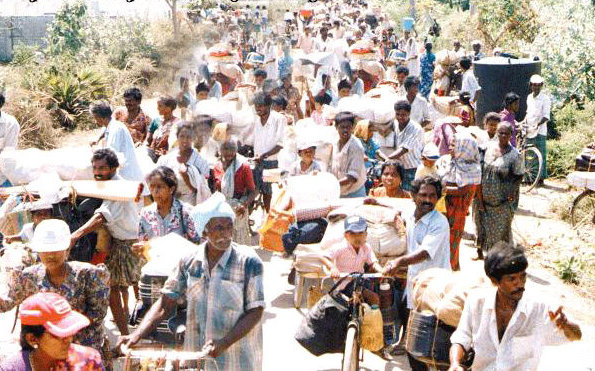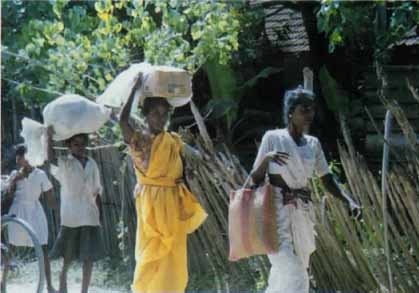
Today marks 24 years since over half a million Tamil men, women and children fled their homes in Jaffna, ahead of a major military offensive by the Sri Lankan government led by Chandrika Kumaratunga, in what became known as the Jaffna Exodus.
On October 30, 1995, the entire town of Jaffna, the largest Tamil population centre in Sri Lanka, streamed out in a mass exodus for the safety of the Vanni, which was then controlled by the Liberation Tigers of Tamil Eelam (LTTE).
Walking for several miles east, crossing the Navatkuli bridge, the throngs of people, carrying whatever they could manage, made their way to the neck of the Jaffna peninsula, before making the dangerous boat journey on to Kilinochchi.

All the while, heavy fighting raged as the LTTE battled to keep the Sri Lanka military at bay.
On the tenth anniversary of the exodus, the Tamil Guardian wrote,
The exodus, as it came to be known amongst them, undeniably marked a turning point in Tamils’ self-understanding. The context in which the exodus took place was aptly summed by The Times of London, whose correspondent, Christopher Thomas, wrote on October 30: “Many civilians have been killed by government shelling and bombing, which has hit residential areas of the town. There is panic among the 600,000 Tamils on the Jaffna peninsula. The greatest humanitarian crisis of the war is in the making...Tamil civilians in Jaffna are evidently terrified by the advancing of the soldiers and are looking to the Tigers to save them from what they are convinced will be a massacre.”
Read the full piece here.
Despite 24 years having passed since the military occupation of the peninsula, normalcy is yet to return to the region. Earlier this month, Sri Lanka’s prime minister pledged a return to normalcy, yet thousands of acres remain occupied by the Sri Lankan armed forces. The intrusion of the military into civil life in the region has been cited by locals as contributing to issues such as unemployment, alcoholism and drug use.
